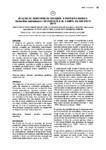Use este identificador para citar ou linkar para este item:
http://www.alice.cnptia.embrapa.br/alice/handle/doc/1028026Registro completo de metadados
| Campo DC | Valor | Idioma |
|---|---|---|
| dc.contributor.author | LEITE, R. M. V. B. de C. | pt_BR |
| dc.contributor.author | BERNARDELLI, L. G. S. | pt_BR |
| dc.contributor.author | OLIVEIRA, M. C. N. de | pt_BR |
| dc.date.accessioned | 2015-11-05T11:11:11Z | pt_BR |
| dc.date.available | 2015-11-05T11:11:11Z | pt_BR |
| dc.date.created | 2015-11-05 | pt_BR |
| dc.date.issued | 2015 | pt_BR |
| dc.identifier.citation | In: REUNIÃO NACIONAL DE PESQUISA DE GIRASSOL, 21. | pt_BR |
| dc.identifier.citation | SIMPÓSIO NACIONAL SOBRE A CULTURA DO GIRASSOL, 9., 2015, Londrina. Anais... Londrina: Embrapa Soja, 2015. | pt_BR |
| dc.identifier.uri | http://www.alice.cnptia.embrapa.br/alice/handle/doc/1028026 | pt_BR |
| dc.description | RESUMO: O objetivo do presente trabalho foi avaliar a reação de genótipos de girassol à podridão branca, causada por Sclerotinia sclerotiorum, no colo e no capítulo, em condições de campo. Dezoito cultivares de girassol foram avaliadas, em experimento implantado em maio de 2014, em Mauá da Serra, PR, em condições de infecção natural do fungo. A avaliação das plantas indicou que a doença foi favorecida pelas condições climáticas de baixa temperatura e alta umidade, ocorrida na região na época de condução do experimento. Todos os genótipos de girassol avaliados foram suscetíveis a S. sclerotiorum. ABSTRACT: The objective of the present work was to evaluate the reaction of sunflower genotypes to Sclerotinia stalk and head rot, caused by Sclerotinia esclerotiorum. Eighteen cultivars were evaluated in a field experiments sowed in May 2014, in Maua da Serra, PR, Brazil, under natural infection in the field. The evaluation of the plants indicated that the disease was favored by the climatic conditions of low temperature and high humidity, which occurred in the region during the time of conducting the experiment. All sunflower genotypes tested are susceptible to Sclerotinia stalk and/or head rot. | pt_BR |
| dc.language.iso | por | pt_BR |
| dc.rights | openAccess | pt_BR |
| dc.title | Reação de genótipos de girassol à podridão branca (sclerotinia sclerotiorum) em condições de campo, na safrinha 2014. | pt_BR |
| dc.type | Artigo em anais e proceedings | pt_BR |
| dc.date.updated | 2017-02-03T11:11:11Z | pt_BR |
| dc.subject.thesagro | Doença de planta | pt_BR |
| dc.subject.thesagro | Girassol | pt_BR |
| dc.subject.thesagro | Podridão branca | pt_BR |
| dc.subject.thesagro | Fungo | pt_BR |
| dc.subject.thesagro | Helianthus Annuus | pt_BR |
| dc.subject.nalthesaurus | Plant diseases and disorders | pt_BR |
| dc.subject.nalthesaurus | Fungal diseases of plants | pt_BR |
| dc.format.extent2 | p. 83-86. | pt_BR |
| riaa.ainfo.id | 1028026 | pt_BR |
| riaa.ainfo.lastupdate | 2017-02-03 | pt_BR |
| dc.contributor.institution | REGINA MARIA VILLAS BOAS DE C LEITE, CNPSO; LUIS GUILHERME SEMENGHINI BERNARDELLI, UNOPAR; MARIA CRISTINA NEVES DE OLIVEIRA, CNPSO. | pt_BR |
| Aparece nas coleções: | Artigo em anais de congresso (CNPSO)  | |
Arquivos associados a este item:
| Arquivo | Descrição | Tamanho | Formato | |
|---|---|---|---|---|
| RNPG.p.8386.pdf | 128,01 kB | Adobe PDF |  Visualizar/Abrir |









